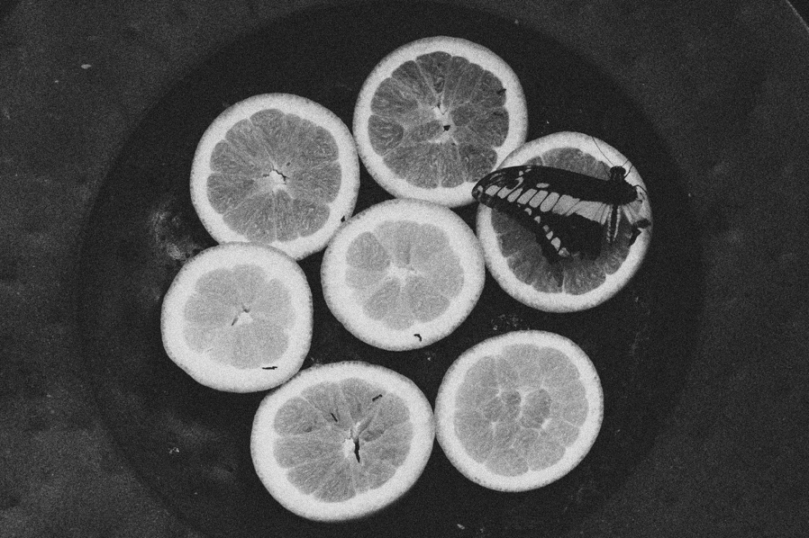
The butterflies flitted throughout the conservatory like fleeting glimpses of perfection and fragility. Each time one of the tourists tried to hone their sights to just one, it leapt in a current of warm air and avoided the confrontation. The tourists drank the beautiful sights of the garden, heard the slapping of water over eroding stones, smelled the sugary-thick air and tried vigorously to capture one of these ever-flapping butterflies on film, to save in their photo albums (stored in the attic).
A small boy walked in the garden too, feeling differing feelings, seeing the same things. His hands, moist, clutched a camera like the crumbling edifice of a building. He attempted to capture, behind the flapping wings, a tangible truth, an unconventional beauty. A pedestal stood rusting in a corner of the conservatory. Resting on it, a neat array of orange slices provided the butterflies with a treat if they desired. That day, the boy noted, the oranges seemed unappealing to all but one—all of the butterflies found better food, the pedestals basked in sunlight, and all of the tourists followed. Sitting atop the oranges, a butterfly with half a wing seemed to call its attention to the boy and nobody else. Sweat clung to his face, and small particles dripped like warm rain to the floor as he pressed his finger to the camera—he hovered above the scene like aircraft. The butterfly fluttered its wing in alarm, trying to move, but couldn’t. So there it stayed, trapped in saccharine nectar, burnt into an image of light.
